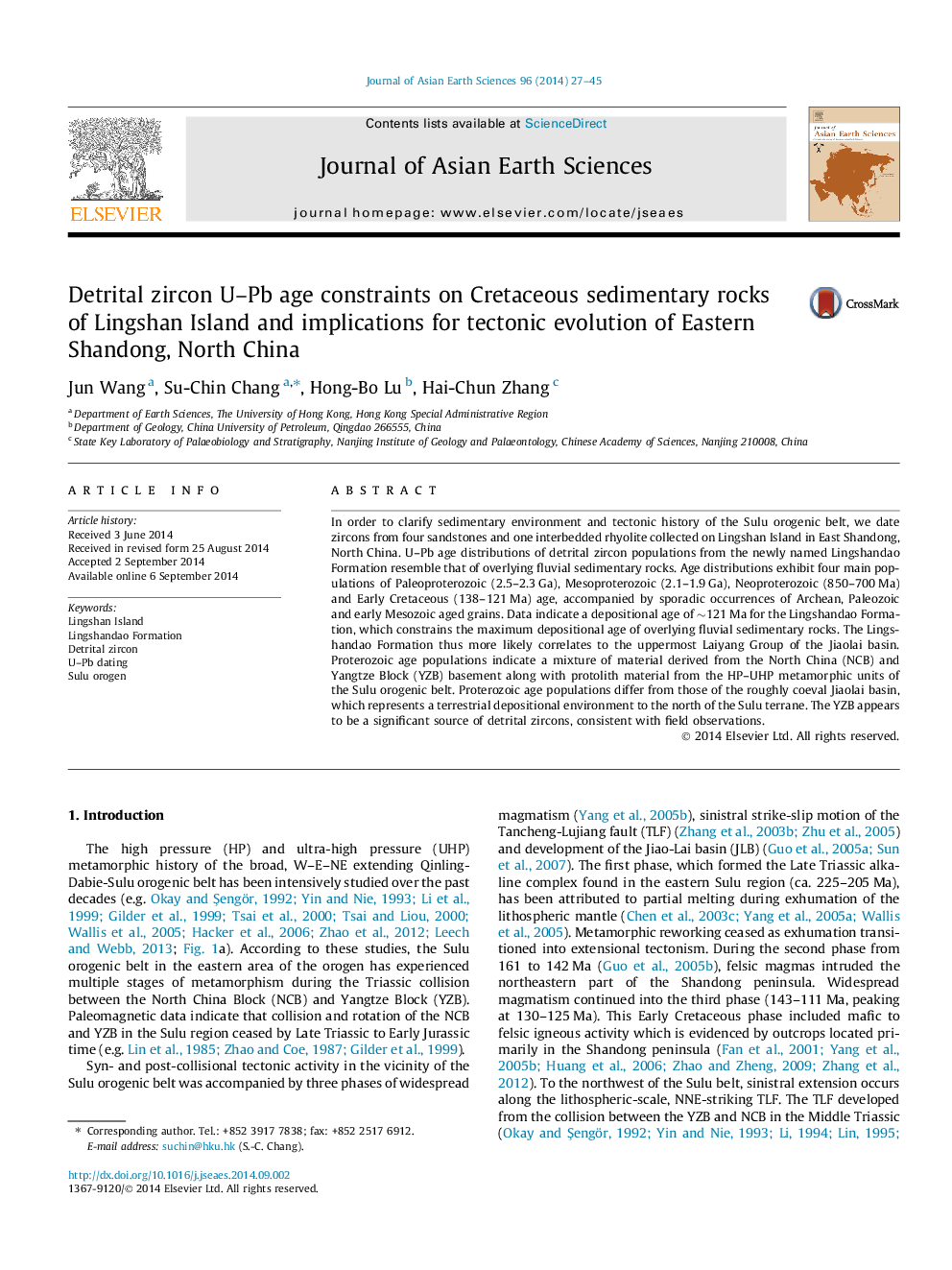| Article ID | Journal | Published Year | Pages | File Type |
|---|---|---|---|---|
| 6444290 | Journal of Asian Earth Sciences | 2014 | 19 Pages |
Abstract
In order to clarify sedimentary environment and tectonic history of the Sulu orogenic belt, we date zircons from four sandstones and one interbedded rhyolite collected on Lingshan Island in East Shandong, North China. U-Pb age distributions of detrital zircon populations from the newly named Lingshandao Formation resemble that of overlying fluvial sedimentary rocks. Age distributions exhibit four main populations of Paleoproterozoic (2.5-2.3Â Ga), Mesoproterozoic (2.1-1.9Â Ga), Neoproterozoic (850-700Â Ma) and Early Cretaceous (138-121Â Ma) age, accompanied by sporadic occurrences of Archean, Paleozoic and early Mesozoic aged grains. Data indicate a depositional age of â¼121Â Ma for the Lingshandao Formation, which constrains the maximum depositional age of overlying fluvial sedimentary rocks. The Lingshandao Formation thus more likely correlates to the uppermost Laiyang Group of the Jiaolai basin. Proterozoic age populations indicate a mixture of material derived from the North China (NCB) and Yangtze Block (YZB) basement along with protolith material from the HP-UHP metamorphic units of the Sulu orogenic belt. Proterozoic age populations differ from those of the roughly coeval Jiaolai basin, which represents a terrestrial depositional environment to the north of the Sulu terrane. The YZB appears to be a significant source of detrital zircons, consistent with field observations.
Related Topics
Physical Sciences and Engineering
Earth and Planetary Sciences
Geology
Authors
Jun Wang, Su-Chin Chang, Hong-Bo Lu, Hai-Chun Zhang,
